
Since 1975, the Martin family has carefully blended the finest apple varieties to make the best cider possible. Our cider is made from a blend of tree ripened apples, including, Red Delicious, Golden Delicious, Jonathan, Gala, Fuji and many more. Our cider is UV treated for your safety.
Our cider is most often purchased in the gallon and half gallon sizes. We also have the following sizes available:
Fresh cider will be available from September 15- December 30
Enjoy Ivy Hill cider throughout the year by freezing. Simply remove about 6-8 ounces of cider from the plastic jug, recap, and freeze. About one or two days before serving, remove frozen cider and place in refrigerator to thaw. Before serving, shake well and enjoy fantastic tasting cider, free from preservatives, any time of the year.
A frequent question we are asked is, “When do you make cider? We would like to watch.” Believe us, when we are making cider, you will know and hear it. The grinder, press and pumps create quite a racket. Cider is pressed in a room on the back of the main market building. We usually press early in the morning before we open for customers and we press as we need it. There is not a set schedule. Because so many of you are curious about the process, below is a cider making photo scrapbook…stay tuned… a video is on the production board!
FROM THE TREE TO THE JUG
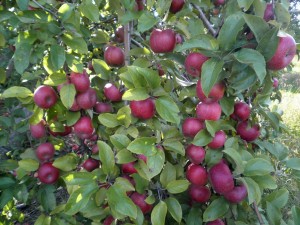
Apples on the tree waiting to be picked
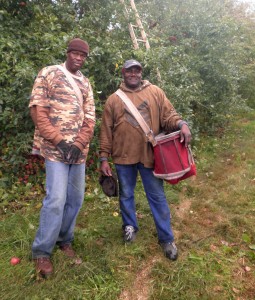
Meet Louis & Jounel
They have been working in the Ivy Hill Farm orchard for 7 years and are our senior picking crew. They hand pick each apple carefully to avoid as much bruising as possible. Some of the trees are 60 or more years old. Mother nature determines how many apples are harvested each year. Spring frost, summer drought, health of bees, wind and hail storms, insects are some of the variables that determine the size of the crop.
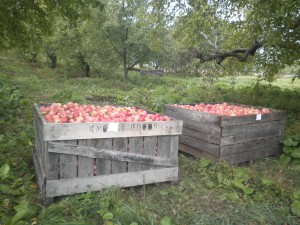
The apples are picked and then transferred into bulk bins. Each bin holds 25 bushels of apples. The apple variety and customer demand at the farm market determines the destination of the bins. The apples that aren’t sold in the farm market will be transported to the cannery.
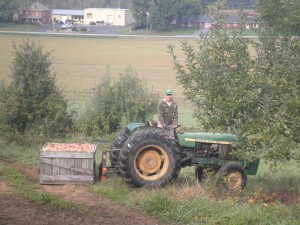
As Ed McMahon would say…
“And heeere’s Johnny!”
Johnny is the orchard foreman and supervises the picking of the apples. As the bins are filled Johnny hauls them out of the orchard, one bin at a time, up and down some pretty steep hills. On this particular day, the orchard was wet and required driving the tractor in reverse to get up the hill.

The apples that don’t go to the farm market, are loaded onto a flat bed trailer to be sent to the cannery. Our farm is a member of the Knouse Food Cooperative. Our apples are processed and canned under the Lucky Leaf and Musselman brand names.
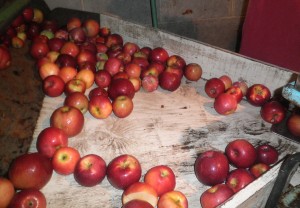
This bin of apples made it to the cider room. Each press of cider is made with several varieties, a sweet apple, a semi-sweet apple and a tart apple. This allows our cider to have a consistent taste throughout the season. The apple bin is raised then tilted and the apples roll out. This is the area were leaves and large stems are removed. Bobby (in the next photo) checks the apples for any bad spots and cuts them out before entering the washer.
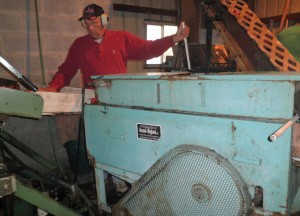
The apples get sprayed with a water bath.
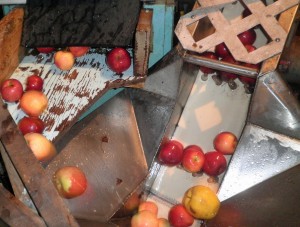
Once the apples have been washed they drop into an elevator to move them to the top of the grinder.
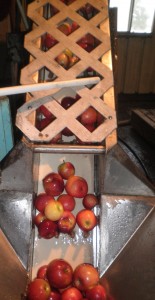
This belt takes the apples to the grinder.
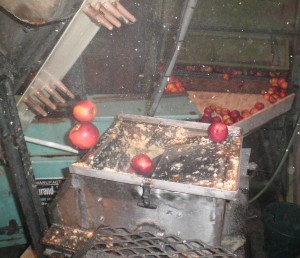
This is the grinding head with the cover removed. As the belt rotates the apples drop into the grinder. This is the loud part of the process. The apples are ground into a pulp similar in consistency to applesauce. You can see the pulp flying in the air. I took this photo quickly or we would have been covered with apple pulp.
This short video shows the apple pulp being pumped into and encased in cider cloths. When this cloth is full, the apple pulp is enveloped then another rack and cloth is added for more apple pulp.
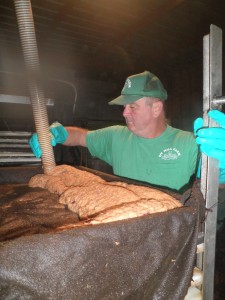
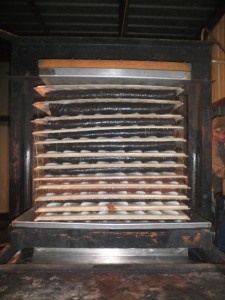
This is a full stack that has been moved into the actual press. A flip of the switch and the pressure is on!

…..and the juice begins to flow….sweet apple cider!!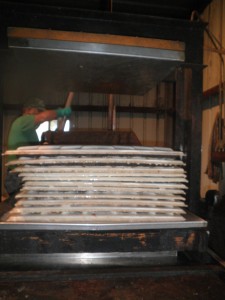
After 15-20 minutes of pressing most of the juice has been extracted from the apple pulp. The press is lowered and the apple pomace is discarded. In the background you can see Steve preparing the next rack.
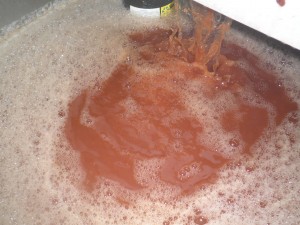
This is the collection tank under the cider press. The cider flows into this tank then is pumped into the the Ultraviolet cider processing unit.
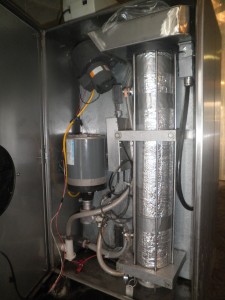
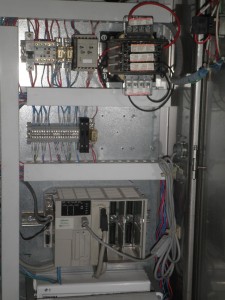
Above you see both sides of the processing unit. The cider is pumped through the unit, exposed to ultraviolet lights that kill harmful particles which may be found in the cider. The beauty of this system is, the cider temperature raises only slightly (as opposed to heat pasteurization) and therefore the distinctive fresh flavor of the cider is not altered. The refrigerated shelf life of Ivy Hill Farm cider is extended from several days to 1 1/2 to 2 weeks. Ultraviolet light is also used in water treatment and disinfecting medical instruments.
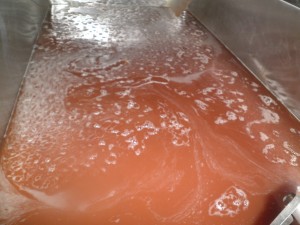
From the UV processor the cider is immediately pumped into refrigerated storage tanks and cooled to 40 degrees.
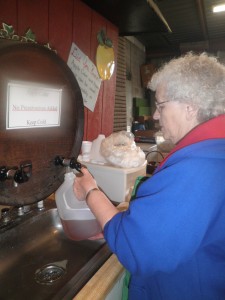
Linda is jugging cider and it’s ready for our customers!
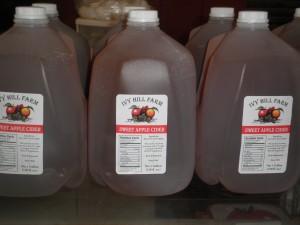
Walt Disney had the Apple Dumpling Gang…..

but we have the Apple Cider Gang!
View our YouTube video of
Click on the above link, sit back with a fresh glass of Ivy Hill Farm apple cider and enjoy this family video production!!
Music by Luke Bryan, “Welcome to the Farm.”